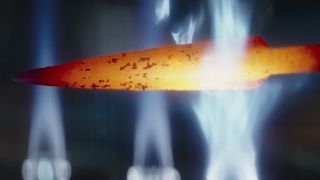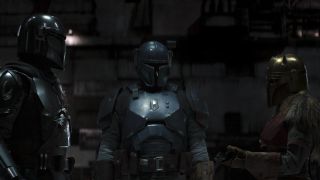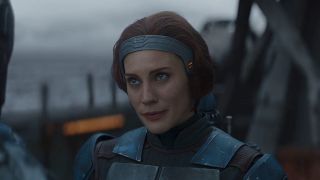Star Wars: 7 Key Things To Know About Mandalorian Culture
THIS is the Way.

When Boba Fett made his big screen debut in The Empire Strikes Back in 1980, Star Wars fans could have never predicted this mysterious, armored badass would be the catalyst for the creation of an entire way of life in a galaxy far, far away. These bounty hunters were eventually referred to as Mandalorians and would become known as some of the most skilled and fearsome warriors in the Star Wars universe, but there was more to their lifestyle than being a hired gun.
If you are only familiar with this phenomenon from the hit Disney+ original series The Mandalorian or its spin-off, The Book of Boba Fett, just know that you are missing out on centuries-worth of fascinating history that most Star Wars movies and TV shows barely scratch the surface of. If you would like to know more about the Mandalorian culture, this is the Way.

The Mandalorians Existed Thousands Of Years Before The Galactic Republic
In the beginning, the beings who would come to be known as the Mandalorians were a humanoid species called the Taung. They originated from the planet Coruscant, where they waged war on the thirteen human nations from the Battalions of Zhell thousands of years before the formation of the Galactic Republic. After a powerful volcano in Coruscant nearly wiped the planet’s population clean, the Taung began to call themselves Dha Werda Verda, which translates to the "Warriors of the Shadow."
The Thirteen Nations would eventually drive the Taung to a nearby planet called Roon. However, under the leadership of Mandalore the First, they conquered another planet in the Outer Rim that they named after the warlord who led them to victory in 7,000 BBY (which means “Before the Battle of Yavin” - meaning it took place prior to the destruction of the Death Star in 1977’s Star Wars: A New Hope). They would also rebrand themselves with a new name inspired by their leader, as well: the Mandalorians.

The Mandalorians Were Advised To Follow Six Strict Guidelines
In its early development, the Mandalorian culture revolved around battle, as war was a source of great honor and pride in their community before many of its members shifted their interests toward becoming bounty hunters, bodyguards, and mercenaries. However, to still be considered loyal to the culture’s faith, members were sworn adhere to a series of guidelines known as the Resol’nare.
This required all Mandalorians to speak their native language of Mando’ade, defend themselves and their family, contribute to the clan, raise children with the ways of the Mandalorian, answer any call to arms by the Mand’alor, and wear Beskar. Fans of the The Mandalorian may recognize that word as the type of iron that a Mandalorian warrior’s armor and T-shaped visor helmet are comprised of. It can only be found on Mandalore and its moon, Concordia, and it is one of the few substances that can withstand lightsaber attacks or laser blasts.

Children Of The Watch Broke Free Of The Mandalorians
One thing that you might have noticed about the Resol’nare is that there is no rule about never taking your helmet off in front of another person. However, why is that such an important guideline for Din Djarin (the birth name of Pedro Pascal’s title character from The Mandalorian) to follow? That is because he is actually part of a cult existing outside of true Mandalorian society called the Children of the Watch.
CINEMABLEND NEWSLETTER
Your Daily Blend of Entertainment News
As fans of The Mandalorian will recall, when Din Djarin met Bo-Katan Kryze (Katee Sackhoff, reprising her role from the animated series, Star Wars: The Clone Wars) and her companions, he was astonished to see them remove their helmets. Then, Kryze revealed to Djarin that he was a Child of the Watch, meaning he was one of the religious zealots who broke free from the mainstream Mandalorians in order to reestablish the ancient Way.

Most Mandalorian Recruits Are Adopted Orphans
Speaking of Bo-Katan Kryze, she is an example of a person who was born into a Mandalorian family and was trained to be a warrior from birth. However, due to their more individualistic and nomadic lifestyles, that is actually much less common in Mandalorian culture. In fact many of their members start as orphaned children who were adopted into the faith.
Of course, it should be noted that not just any child can be taken in as a Mandalorian foundling. They would typically choose children who seemed to display a warrior’s spirit - such as Jango Fett, who immediately helped supercommandos exact a vengeful attack on his family’s murderers when found. Din Djarin was also a Mandalorian foundling, which explains why he was not familiar with other factions outside of the Children of the Watch before meeting Bo-Katan Kryze.

Mandalorians Can Be Any Gender Or Race
For all of the strict requirements that the Mandalorian culture demands to be considered a member (warrior spirit included, of course), they will still accept just about anyone no matter where they come from. The culture does not discriminate, whether their members are male or female or even human or alien. This is evident by how some Mandalorians’ helmets sport a more unique design that is created to better fit an individual of their species.

The Mandalorians Have Been Enemies To The Jedi
One key story element that would keep audiences invested in The Mandalorian is Mando’s tender relationship with Grogu (a.k.a. Baby Yoda), whom he eventually discovers is a Jedi. However, things have not always been so peaceful between the Force-wielders and the bounty hunters. Their ever-expanding crusades caused tension with the Jedi, whose extraordinary abilities were beyond their expectation and their understanding.
This drove the Mandalorians to advance their technology and fighting styles to help them best the Jedi in battles throughout the period known as Mandalorian-Jedi War. However, there was a time of peace between them credited to Tarre Vizsla - a man of Mandalorian ancestry who was inducted into the Jedi Order as a child and created the Darksaber. After leaving to become a full-fledged Mandalorian, he came to earn the respect of both cultures and his Darksaber became a symbol of unity between the fractured houses and clans of Mandalore.

The Mandalorians’ Home Planet Has Suffered Two Cataclysmic Attacks
Unfortunately, the truce between the two cultures would not last forever, but their conflict did end with one final battle of the Mandalorian-Jedi War that left the planet of Mandalore scorched and uninhabitable. Some would stay on the planet in cities shielded from the brutal desert under protective domes while others moved to the moon of Concordia or found other planets to live on.
This was only the first cataclysm that Mandalore would suffer and not even the worst. When the Empire was still in power, Moff Gideon (played by Giancarlo Esposito on The Mandalorian) led an attack on the planet that left the planet bombarded, most of the Mandarlorian population that was left savagely killed, and much of their Beskar taken. This onslaught came to be known as the Great Purge of Mandalore, and also marks the moment when Gideon was able to assume possession of the Darksaber after Bo-Katan Kryze lost it.
At the birth of the Star Wars franchise decades ago, every young fan wanted to be a Jedi. Now, after years of the culture’s expansion in books, video games, and TV shows like The Book of Boba Fett, it looks like the new cool thing to be is a Mandalorian. Learning the philosophies and history above is just the first step.

Jason Wiese writes feature stories for CinemaBlend. His occupation results from years dreaming of a filmmaking career, settling on a "professional film fan" career, studying journalism at Lindenwood University in St. Charles, MO (where he served as Culture Editor for its student-run print and online publications), and a brief stint of reviewing movies for fun. He would later continue that side-hustle of film criticism on TikTok (@wiesewisdom), where he posts videos on a semi-weekly basis. Look for his name in almost any article about Batman.
Most Popular


